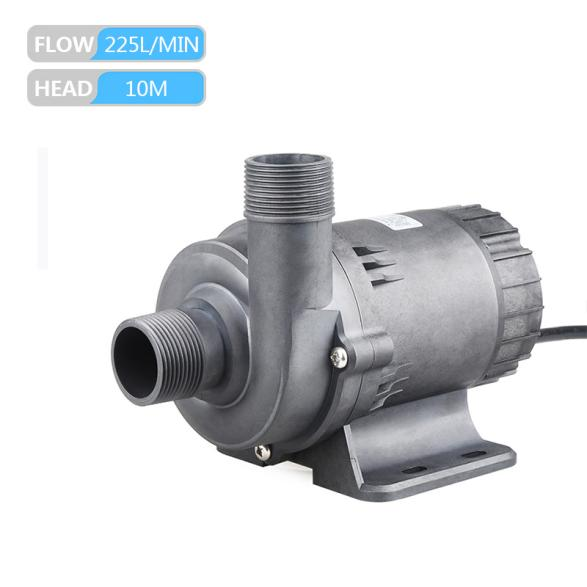Variable frequency water pump refers to a constant pressure water supply system with fully automatic functions, which is composed of necessary pipe valve components, variable frequency controller, and sensor components on the basis of a regular booster pump.
The characteristics of variable frequency water pumps:
1. Efficient and energy-saving. Compared with traditional water supply methods, variable frequency constant pressure water supply can save 30% -50% energy;
2. Small footprint, low investment, and high efficiency;
3. Flexible configuration, high degree of automation, complete functions, flexible and reliable;
4. Reasonable operation, due to the decrease in average speed within a day, the average torque and wear on the shaft are reduced, and the service life of the water pump will be greatly improved;
5. Due to the ability to achieve soft stop and soft start of the water pump, and to eliminate the water hammer effect (water hammer effect: when starting and stopping directly, the liquid function rapidly increases, leading to a great impact on the pipeline network and having a great destructive force);
6. Half the operation, saving time and effort.
In addition, we would like to introduce the energy-saving characteristics of variable frequency pumps: the energy-saving feature of variable frequency pumps lies in the non peak water supply period, during which the water consumption does not reach the maximum rated water consumption. Obviously, it is not necessary to run the pump at its maximum speed to meet the water consumption requirements. At this point, the variable frequency water pump can automatically output a suitable frequency value based on the amount of water used. When the quality does not reach the rated 50Hz, the output power of the water pump does not reach the set rated power, thus achieving the goal of energy conservation. We know that the actual power P (power) of a water pump is Q (flow rate) x H (pressure). The flow rate Q is proportional to the power of the rotational speed N, the pressure H is proportional to the square of the rotational speed N, and the power P is proportional to the cube of the rotational speed N. If the efficiency of the water pump is constant, when adjusting the flow rate to decrease, the rotational speed N can decrease proportionally, and at this time, the shaft output power P decreases in a cubic relationship. So, the power consumption of the water pump motor is approximately proportional to the rotational speed.
Post time: Jul-04-2024








